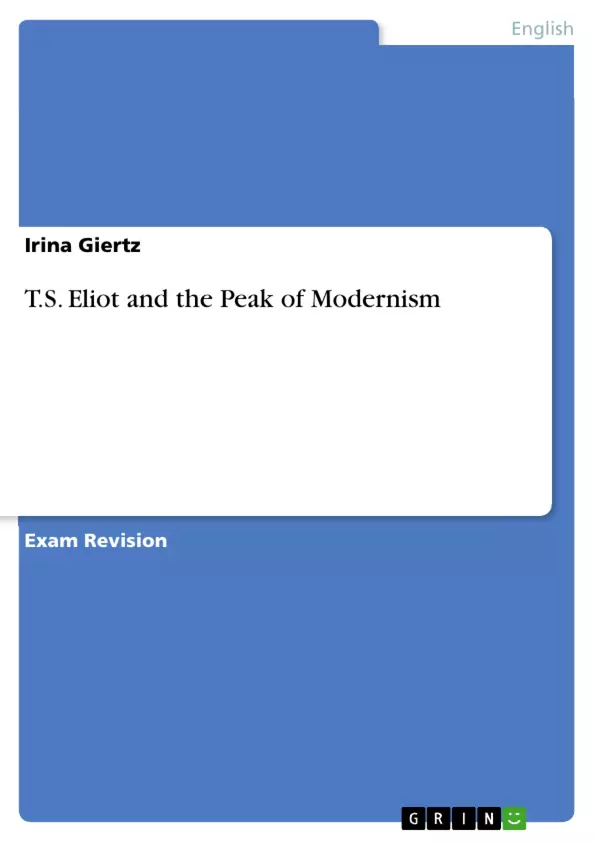Modernism is the art of the tradition of the new. It is experimental, formally complex, elliptical, and tends to associate notions of the artist's freedom from realism, materialism, traditional genre and form, with notions of cultural apocalypse and disaster. It is disputable when it starts (French symbolism; decadence; the break-up of naturalism) and whether it has ended. It can be regarded as a time-bound concept (from 1890 to 1930) or a timeless one (including Lawrence Sterne, John Donne, William Blake, Samuel Taylor Coleridge). The best focus remains a body of major writers: James, Conrad, Proust, Mann, Gide, Kafka, Svevo, Joyce, Musil, Faulkner in fiction; Strindberg, Pirandello, Wedekind, Brecht in drama; Mallarmé, Yeats, Eliot, Pound, Rilke, Stevens in poetry. Their works are aesthetically radical, contain striking technical innovations, emphasise spatial and rhythmic as opposed to chronological relations, tend towards ironic modes.
Table of Contents
- 1. Modernism
- 1.1. Definition and comparison to other literary periods
- 1.2. Characteristic perception and representation of reality
- 2. Progressive traits in Eliot's poetry vs. tradition
- 2.1. New tasks of the modern poetry
- 2.2. New themes
- 2.3. New forms and techniques
- 2.4. Tradition - religious and literary
- 3. Eliot's poetry and contemporary film (themes, motifs, techniques)
- 3.1. French Impressionism
- 3.2. German Expressionism
- 3.3. Neo-Realism
- 3.4. Soviet Montage
- 3.5. Montage in T.S. Eliot's work
Objectives and Key Themes
This text explores the poetry of T.S. Eliot within the context of modernism, examining his work's progressive traits, its relationship to contemporary film techniques, and its engagement with themes of industrialization, sexuality, and the changing role of women in society.
- Defining modernism and its characteristics
- Analyzing the innovative aspects of Eliot's poetry
- Exploring the influence of film techniques on Eliot's work
- Investigating the thematic exploration of industrialization, sexuality, and the role of women
- Understanding the context of Eliot's poetry in relation to broader cultural and historical changes
Chapter Summaries
The first chapter provides a definition of modernism, contrasting it with other literary periods and analyzing its characteristic perception and representation of reality. The second chapter delves into the progressive traits of Eliot's poetry, examining the new tasks of modern poetry, the emergence of new themes, the development of new forms and techniques, and the role of tradition in Eliot's work. The third chapter explores the connections between Eliot's poetry and contemporary film, focusing on the influence of movements such as French Impressionism, German Expressionism, Neo-Realism, and Soviet Montage on his work.
Keywords
Modernism, T.S. Eliot, poetry, film, industrialization, sexuality, women, tradition, innovation, techniques, representation, reality.
- Quote paper
- LL.M., MA Irina Giertz (Author), 2005, T.S. Eliot and the Peak of Modernism, Munich, GRIN Verlag, https://www.grin.com/document/285211



